With Japan Italy Bridge we have already addressed a deep focus on the Imperial Palace and its gardens, but those are not the only gardens of Japan. Today we will talk about the most beautiful green spaces of the Rising Sun.
Gardens of Japan, the green in the midst of modernity
Author: Sara

photo credits: giardiniepiscine.it
Every country in the world, no matter how evolved, technological and chaotic it is, always hides an oasis of extraordinary peace, a place where the hand of man has not destroyed, but rather takes care of natural beauties of indescribable charm. We are not talking about natural parks this time, but about smaller green spaces such as gardens. Green spaces that arise in unexpected places and that give the mind and soul a break from all that is skyscraper landscapes and cars that, again, Japan knows how to give us with its usual elegance and unique spiritual touch.
The trip we are proposing today will make you relax, so how about making yourself comfortable, preparing a delicious herbal tea and follow us?
Kenrokuen
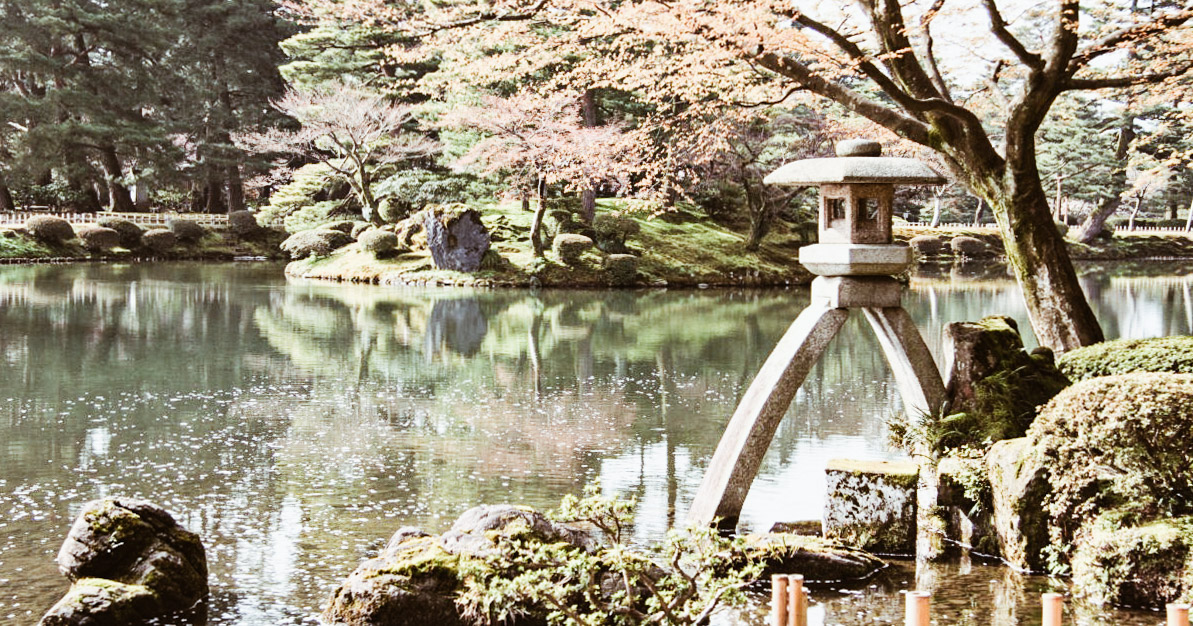
photo credits: japantravel.com
The first of our stops is Kanazawa where there is the Kenrokuen which covers an area of 11.4 hectares and is considered one of the most beautiful gardens of the Rising Sun. Kept luxuriant from generation to generation by the Maeda family since the feudal period, in Japanese the name Kenrokuen means “garden of 6 attributes” because in it are enclosed the 6 characteristics of the perfect garden: space, tranquility, artifice, antiquity, waterways and landscapes.
Official Web Site: pref.ishikawa.jp
Korakuen
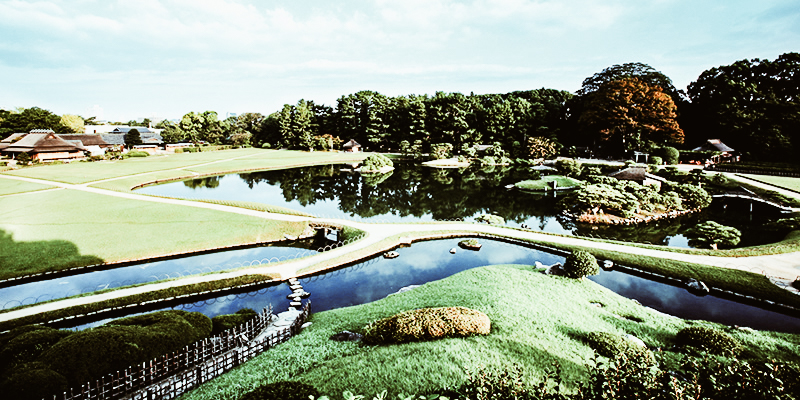
photo credits: okayama-kanko.net
The second stop takes us to Okayama, where the magnificent Korakuen stands: built in 1687 exclusively as a place of entertainment for the ruling family, it was opened to the public in 1884, when it became property of Okayama prefecture. It encloses forests, tea and rice fields, a spectacular pond and many small streams.
Official Web Site: okayama-korakuen.jp
Kairakuen
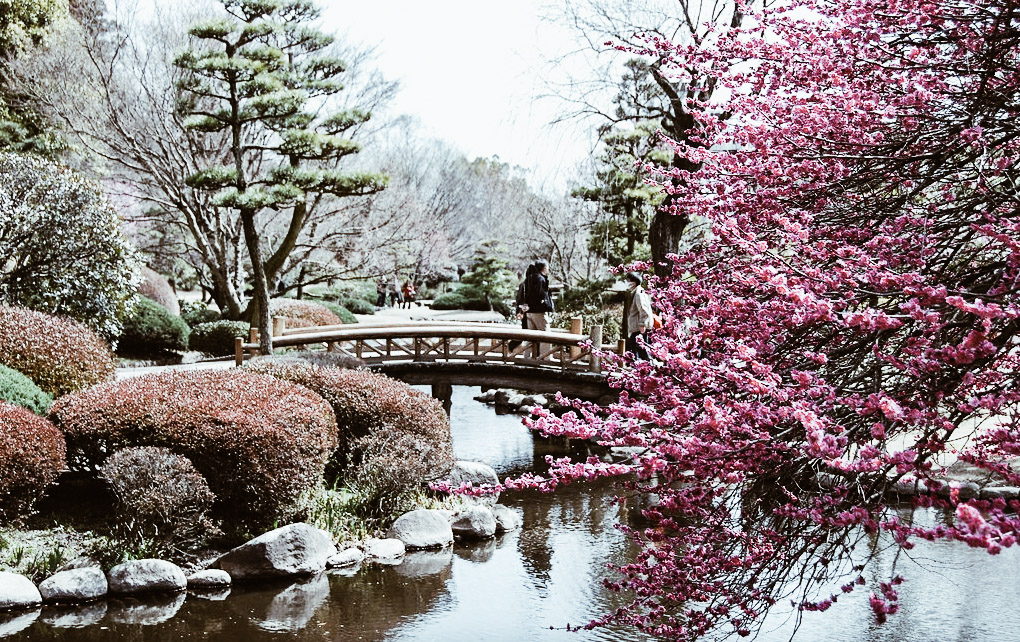
photo credits: flickr.com
We have come to the third of the most beautiful landscape gardens in Japan, we are in Mito, the capital of Ibaraki Prefecture and here Kairakuen has always been a place accessible to all, not only for the local lord Tokugawa Nariaki who had it built in 1841. This beautiful green space has become famous thanks to the Mito Ume Matsuri, the festival of plum blossoms, held between February and March: a spectacle of timeless charm.
Official Web Site: ibaraki-kairakuen.jp
Kokedera

photo credits: saihoji-kokedera.com
Our fourth visit will be to Kyoto, to the garden that is home to 120 different types of moss! It is the Kokedera or Saihoji Temple, originally part of a royal villa it became a temple almost 1000 years ago and today is considered a UNESCO World Heritage Site. Visiting this place also offers a unique opportunity, as before being allowed access, visitors must participate in kito (chanting) and shakyo (the copying of Buddhist scriptures).
Official Web Site: saihoji-kokedera.com
Shinjuku Gyoen
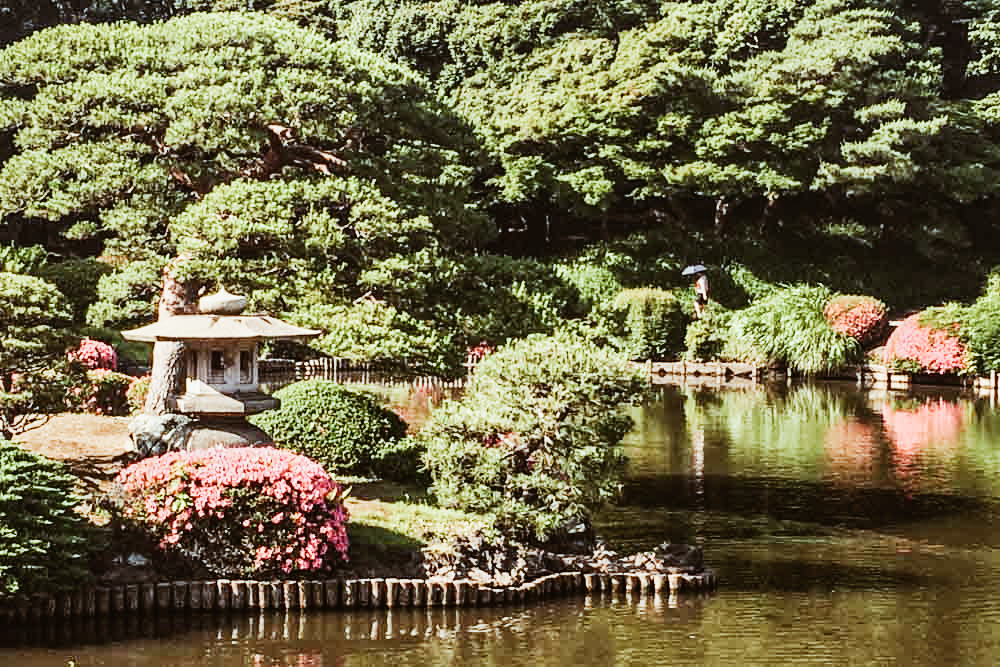
photo credits: www.japanistry.com
For our fifth stop, we fly straight into beautiful Tokyo where we can come across the Shinjuku Gyoen National Garden, one of the most striking national parks in the country. Built in the Edo period as a private residence of the feudal lord Kiyonari Naito, it became open to the public in 1949. Inside you can immerse yourself in various gardens, first of all the oldest one in Japan full of lakes, islets, bridges and pavilions. Then you can get lost in the magnificent rose garden of the French-style garden and, last but not least, enter the English-style garden with its wide green lawns lined with beautiful cherry trees: here Hanami acquires an indescribable magic!
Official Web Site: env.go.jp
Imperial Palace East Gardens
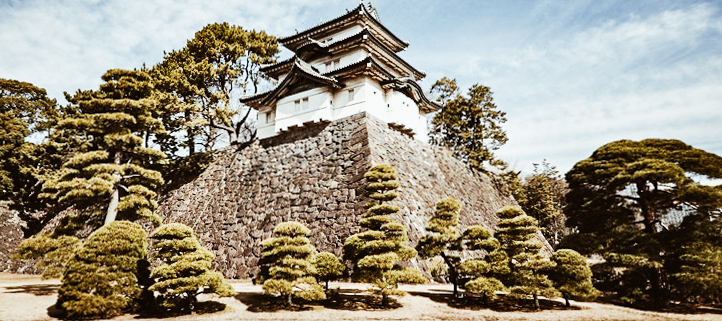
photo credits: enjoy.vivi.city
We conclude our nature trail by staying in Tokyo. Over 210,000 square meters where, once upon a time, stood the walls of Edo Castle, residence of the Tokugawa shogun who ruled Japan from 1603 to 1867. At the foot of the hill, exactly where the defensive walls once stood, lies this marvellous garden in which the Ninomaru pond is home to some rather rare aquatic plants and is covered with Nuphar Japonicum, yellow water lilies.
Official Web Site: https://www.kunaicho.go.jp
Share this:
- Click to share on Facebook (Opens in new window)
- Click to share on Twitter (Opens in new window)
- Click to share on Tumblr (Opens in new window)
- Click to share on Pinterest (Opens in new window)
- Click to share on Telegram (Opens in new window)
- Click to share on WhatsApp (Opens in new window)
- Click to share on Reddit (Opens in new window)
- Click to print (Opens in new window)






